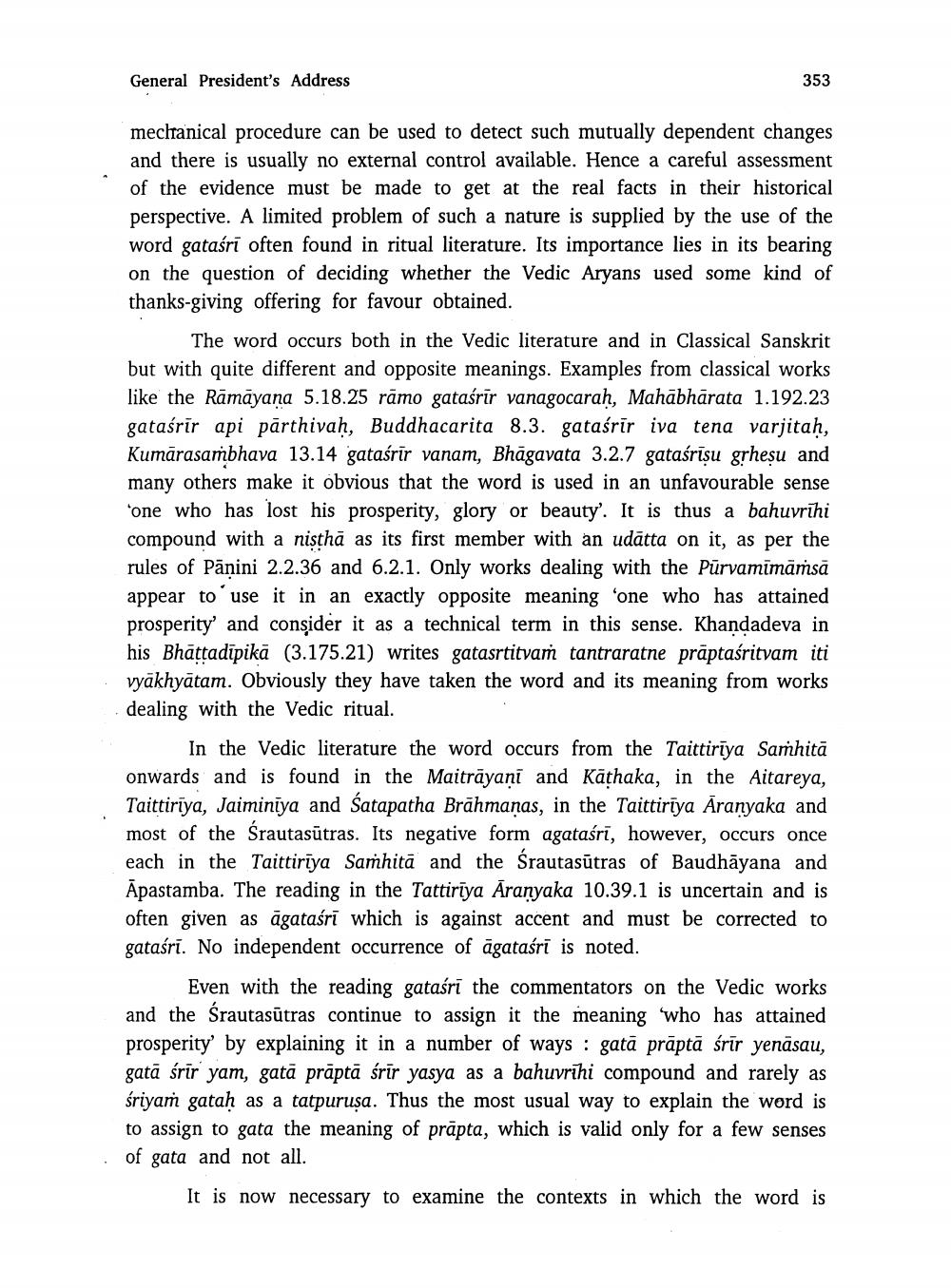________________
General President's Address
353
mechanical procedure can be used to detect such mutually dependent changes and there is usually no external control available. Hence a careful assessment of the evidence must be made to get at the real facts in their historical perspective. A limited problem of such a nature is supplied by the use of the word gataśri often found in ritual literature. Its importance lies in its bearing on the question of deciding whether the Vedic Aryans used some kind of thanks-giving offering for favour obtained.
The word occurs both in the Vedic literature and in Classical Sanskrit but with quite different and opposite meanings. Examples from classical works like the Rāmāyaṇa 5.18.25 rāmo gataśrīr vanagocarah, Mahābhārata 1.192.23 gataśrīr api pārthivaḥ, Buddhacarita 8.3. gataśrīr iva tena varjitaḥ, Kumarasambhava 13.14 gataśrir vanam, Bhāgavata 3.2.7 gataśrīsu grheṣu and many others make it obvious that the word is used in an unfavourable sense 'one who has lost his prosperity, glory or beauty'. It is thus a bahuvrihi compound with a nisṭhā as its first member with an udätta on it, as per the rules of Panini 2.2.36 and 6.2.1. Only works dealing with the Purvamimämsä appear to use it in an exactly opposite meaning 'one who has attained. prosperity and consider it as a technical term in this sense. Khandadeva in his Bhāṭṭadīpikā (3.175.21) writes gatasrtitvaṁ tantraratne praptaśritvam iti vyākhyātam. Obviously they have taken the word and its meaning from works dealing with the Vedic ritual.
In the Vedic literature the word occurs from the Taittiriya Samhita onwards and is found in the Maitrayani and Kathaka, in the Aitareya, Taittiriya, Jaiminiya and Satapatha Brahmanas, in the Taittiriya Aranyaka and most of the Srautasütras. Its negative form agataśri, however, occurs once each in the Taittiriya Samhita and the Śrautasutras of Baudhayana and Äpastamba. The reading in the Tattiriya Aranyaka 10.39.1 is uncertain and is often given as āgataśrī which is against accent and must be corrected to gataśrī. No independent occurrence of agataśrī is noted.
Even with the reading gataśrī the commentators on the Vedic works and the Śrautasutras continue to assign it the meaning 'who has attained prosperity' by explaining it in a number of ways: gatā prāptā śrīr yenāsau, gatā śrir yam, gatä präptä śrir yasya as a bahuvrihi compound and rarely as śriyam gataḥ as a tatpurușa. Thus the most usual way to explain the word is to assign to gata the meaning of präpta, which is valid only for a few senses of gata and not all.
It is now necessary to examine the contexts in which the word is




